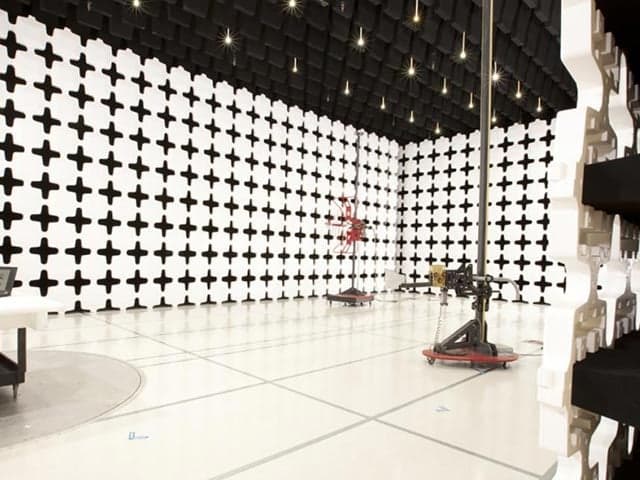What You Need to Know About EN 55032 and 55035 (CISPR 32 and 35)
This technical guide examines the harmonized CISPR 32/EN 55032 emissions standard and CISPR 35/EN 55035 immunity standard for multimedia equipment, explaining how these replaced separate broadcast receiver and ITE standards, detailing expanded test requirements for radiated emissions, immunity spot frequency testing, and compliance obligations for manufacturers marketing products in the EU.
The case for CISPR 32 / EN 55032
Prior to the arrival of digital television receivers, television manufacturers had an emissions standard (CISPR 13) and computer manufacturers had a different emissions standard (CISPR 22). Professional audio, video, audio-visual and entertainment lighting control equipment was covered by the European standard EN 55103-1.
As digital receivers grew in popularity, manufacturers found themselves faced with the necessity of dealing with two separate standards. Since limits and test methods differentiated between the two standards, each had to be addressed separately.
In 2012, the Comité International Spécial des Perturbations Radioélectriques (CISPR) published CISPR 32, an emissions standard that replaced both CISPR 13 (broadcast receivers emissions) and CISPR 22 (ITE emissions). The EU adopted this new standard and published it as “EN 55032.” The CISPR 32, or EN 55032, standard applies to all multimedia equipment having a rated rms AC or DC supply voltage not exceeding 600 V.
In 2015, the 2nd edition of CISPR 32 / EN 55032 was published, requiring that as of March 2, 2017, any product sold in EU and previously tested against EN 55013, EN 55022, or EN 55103-1 must meet the requirements of CISPR 32 / EN 55032.
The 2nd Edition of CISPR 32 / EN 55032 provided several clarifications, new test methods, and guidance on testing additional product types. This edition added limits and other guidance for testing radiated emissions below 1 GHz as well as limits for outdoor units of home satellite receiving equipment over the frequency range of 30 MHz to 18 GHz.
About CISPR 35 / EN 55035
On August 16, 2016 the immunity standard CISPR 35 was also published. In the EU the standard is published as EN 55035. The standard replaces EN 55020 and EN 55024 and EN 55103-1.
Together, the standard redefines what is considered Multimedia Equipment (MME). Today, the following products all fall under the MME umbrella:
- Information Technology Equipment (ITE)
- Audio and video equipment
- Broadcast receivers
- Combinations (multi-use)
The test methods have not substantially changed under CISPR 35 / EN 55035 although one additional test method, Immunity Spot Frequency, has been added. EN 55035 does include new requirements for how to monitor Equipment Under Test (EUT), which clarify what you need to monitor for specific equipment. While the tests have not changed much, the standard now requires all functions of a product to be assessed for immunity, which requires manufacturers to complete more testing on their product.
It is important to note that the obligation to be tested to the current standard belongs to the manufacturer at the time a product is put on the market. EN 55013 (Broadcast receivers emissions) and EN 55022 (ITE emissions) were withdrawn by the IEC on March 5, 2017. Old immunity standards are still valid as of the release of this article; however, EN 55020 and EN 55024 could go away as early as July 2020.
There is a possibility that if you tested recently under EN 55024, your product may be compliant under 55024, but might not pass under EN 55035. If your product compliance was completed in the past two years under EN 55024, you should consider re-testing under EN 55035 Multimedia Equipment Standard Update.
Questions about EN 55032 or EN 55035?
Learn more about the new standards and decide whether you will need to re-test by contacting Element to speak with our engaged experts.
Speak to our team of experts

CE Marking Services
Accelerate EU market access with Element's CE Marking services. Expert testing, documentation & compliance support for electrical products. Get certified faster.

Product Certification Services
Unlock global market access with Element's expert product certification services. Streamline compliance for CE, UKCA, FCC and more. Fast, reliable, and global. Learn More.

Electromagnetic Compatibility (EMC) Testing & Electromagnetic Interference (EMI) Testing & Certification
Element provides accredited EMC and EMI testing and certification services, helping businesses meet regulatory requirements, reduce costly redesigns, and bring products to market faster through expert compliance support.

